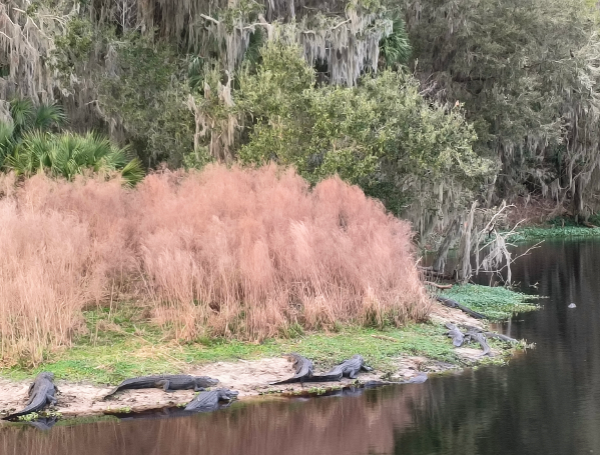
Image courtesy of Yunpeng Liu, UF/IFAS Invasion Science Research Institute
A comprehensive new study from the University of Florida paints a concerning picture for the future of American forests. Tracking over five million trees across nearly three decades, researchers have uncovered a troubling trend: the steady decline of native tree species as non-native counterparts gain ground.
The findings, published this week in the prestigious journal Proceedings of the National Academy of Sciences (PNAS), highlight how these “biological invasions” are gradually reshaping forest ecosystems across the eastern United States. While overall forest greenery appears healthy and even increasing in some aspects, scientists warn that the subtle shift beneath the canopy could have significant long-term consequences for biodiversity and ecosystem health.
READ: Forest Service Taps Grassroots Partners To Combat Wildfires, Protect Public Lands
“Non-native tree invasions were associated with the loss of locally rare native tree species. This loss of native species will trigger a variety of subsequent losses in ecosystems,” explained Yunpeng Liu, a post-doctoral researcher affiliated with the UF/IFAS Invasion Science Research Institute and lead author of the study. “Because native trees provide homes and food for many local wildlife, including insects, birds, and mammals, it could impact the biodiversity and survival of dependent wildlife.”
The research team analyzed extensive data from the U.S. Department of Agriculture Forest Inventory and Analysis program, spanning from 1995 to 2023. This rich dataset provided an unprecedented view of how non-native species are infiltrating and altering forest ecosystems on a continental scale. Crucially, the study explored the potential impact of this slow but persistent decline in native tree diversity on other wildlife.
Their analysis revealed a consistent pattern: in forest plots where non-native tree species were present, the variety of native tree species decreased over time. Conversely, non-native trees showed an increase in both the number of different species (species richness) and the total amount of living plant material (forest biomass).
READ: Hurricane Helene Devastates Seahorse Key Marine Lab; UF/IFAS Launches $350,000 Recovery Fundraiser
Interestingly, the overall biomass of native trees also increased during the study period, a trend researchers attribute to factors like reforestation efforts and rising atmospheric carbon dioxide levels. However, the simultaneous loss of native species indicates a fundamental ecological shift driven by competition and displacement from the newcomers.
“Native species that became extinct after non-native species moved in were often rare and similar to the newcomers,” Liu pointed out. “This similarity means they competed for the same resources and could disrupt pollinators or seed dispersers.”
The study further revealed that rare native tree species are particularly vulnerable to this invasion. Their small populations make them more susceptible to extinction, and they often struggle to compete with the more aggressive non-native species.
“The continued loss of rare species could eventually make ecosystems more vulnerable if dominant species decline or disappear without similar rare species to replace them,” cautioned Liu. “Additionally, losing rare species is likely to alter community structure and biological interactions, which may reduce ecosystems’ ability to resist global changes and increasing human activity.”
READ: UF Latest Florida University To Join ICE Immigration Enforcement Program
Researchers also observed that non-native invasions were more prevalent in areas with lower initial tree density and biomass, suggesting that recent disturbances creating open spaces might provide opportunities for new species to establish themselves.
“While the biomass of both native and non-native trees has increased over time, we found that non-native species account for a small portion of this increase by comparison but significant enough to create a gradual erosion of native tree diversity,” Liu concluded. “This subtle shift in native versus non-native tree species could affect forest health and resilience in ways that are not immediately visible.”
The findings underscore the importance of monitoring and managing non-native tree species to protect the long-term health and biodiversity of United States forests.
While the forests may appear green and thriving on the surface, the silent invasion occurring beneath the canopy poses a significant threat to the intricate ecological balance that native trees help maintain.
Please make a small donation to the Tampa Free Press to help sustain independent journalism. Your contribution enables us to continue delivering high-quality, local, and national news coverage.
Connect with us: Follow the Tampa Free Press on Facebook and Twitter for breaking news and updates.
Sign up: Subscribe to our free newsletter for a curated selection of top stories delivered straight to your inbox.
